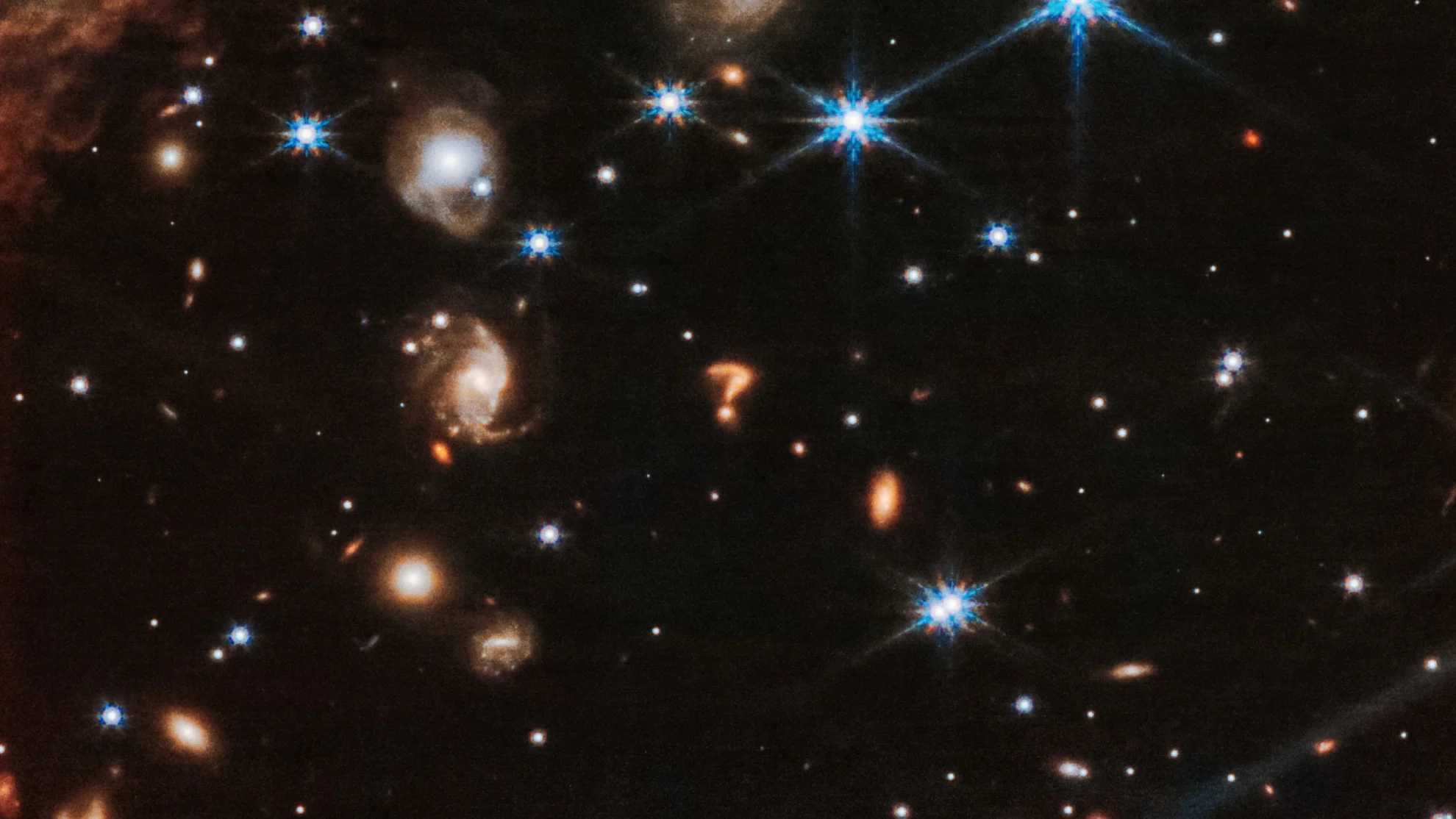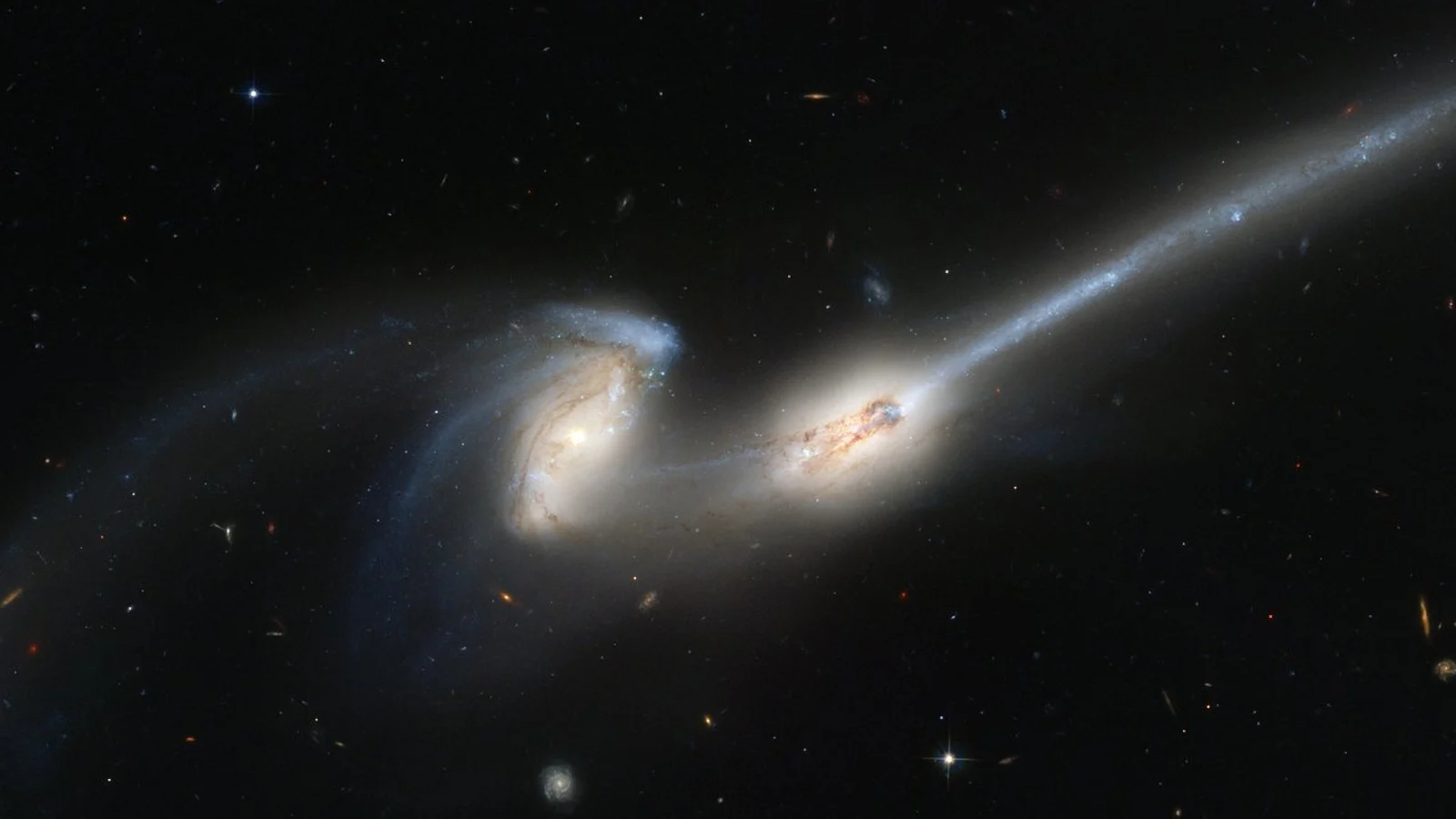
Webb spots a 'cosmic question mark' while peering at rambunctious young stars
Something very strange was spotted in the background of a new James Webb Space Telescope image — a question mark!
The James Webb Space Telescope has been viewing the cosmos for well over a year now. It has shown us so many amazing things in that time, from spectacular views of nebulae and star systems, to some of the earliest galaxies to form in the universe. Most recently, we were shown Webb's highly detailed view of the gas and dust surrounding two 'rambunctious' young stars.

The James Webb Space Telescope has captured a tightly bound pair of actively forming stars, shown here as the orange-white splotch in the middle of the red diffraction spikes, at image centre. Two immense lobes of gas and dust stretch away from the pair in opposite directions. Credit: NASA, ESA, CSA, Joseph DePasquale (STScI), Anton M. Koekemoer (STScI)
Known as Herbig-Haro 46/47, this celestial pair was discovered in 1977 and has been a popular target for astronomers to study since. According to NASA, the two stars only formed a few thousand years ago and are still in the process of ingesting material from their surroundings. When they gather too much material at once, some of it gets ejected from the stars along twin jets, which have formed two long lobes of gas and dust stretching away from the pair over thousands of years.
While the overall view of HH 46/47 is spectacular, something strange appears in the background.
Below the young stars, their jets of material, and the large nebula that surrounds them (in blue), there's a tiny oddity, only barely visible except in the full-sized version of the image on the Webb Telescope website.
It's a question mark!

This zoomed in view of Webb's view of HH 46/47 shows this strange formation that looks like a question mark. The inset full image, top left, shows where the zoomed in view is taken from (white rectangle). Credit: NASA, ESA, CSA, Joseph DePasquale (STScI), Anton M. Koekemoer (STScI)/Scott Sutherland
Or, at the very least, it's some very distant celestial object that looks like a question mark from our distance and vantage point.
"The two distinct features could easily be merging galaxies in the background, with the upper part of the question mark being part of a larger galaxy getting tidally disrupted," Matt Caplan, an assistant professor of physics at Illinois State University told Space.com. "Given the color of some of the other background galaxies, this doesn't seem like the worst explanation. Despite how chaotic mergers are, double lobed objects with curvy tails extending away from them are very typical."
Galactic mergers end with a larger galaxy of some kind — perhaps a new spiral or a more diffuse-looking elliptical galaxy. However, during the early to mid-stages of the process, their mutual gravitational pull can cause them to deform, sometimes in odd ways.

This image of The Mice Galaxies (NGC 4676) was captured by the Hubble Space Telescope in 2002. It shows an example of the elongated formations produced by merging galaxies. Credit: NASA, H. Ford (JHU), G. Illingworth (UCSC/LO), M. Clampin (STScI), G. Hartig (STScI), the ACS Science Team, and ESA
Regarding this new look at Herbig-Haro 46/47, the JWST team wrote: "NASA's James Webb Space Telescope captured the most detailed portrait of these stars to date. The pair of actively forming stars has sent out jets in two directions for thousands of years. Although Herbig-Haro 46/47 has been studied by many telescopes, both on the ground and in space ... Webb is the first to capture them in high-resolution near-infrared light. With Webb, we can now understand more of the stars' activity – past and present – and peer through the dusty blue nebula, which appears black in visible-light images, that surrounds them. Over time, researchers will be able to glean new details about how stars form."











